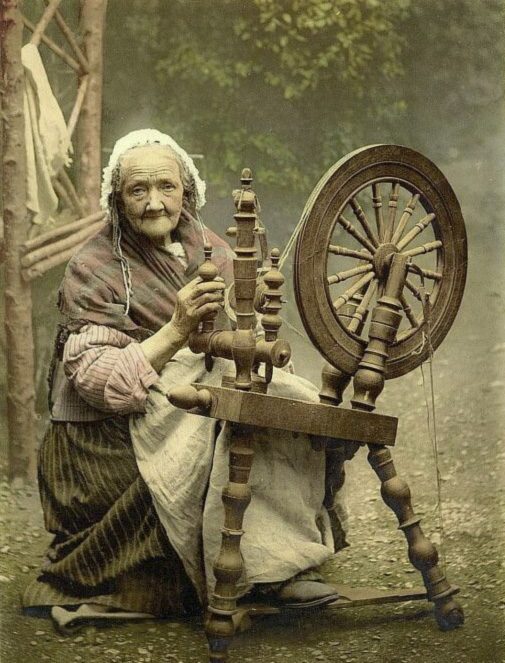The Royal Warrant
Wendy Keith was honoured to be granted The Royal Warrant by His Royal Highness the Prince of Wales,
as Designers and Makers of Shooting Stockings and Kilt Hosiery in 2005.

BY APPOINTMENT TO HIS ROYAL HIGHNESS
THE PRINCE OF WALES AS DESIGNERS AND
MAKERS OF SHOOTING AND KILT HOSIERY
THE PROGRESSION OF HAND-KNITTING SINCE THE MIDDLE AGES
To ward off the cold, the craft of hand-knitting became a source of survival to many in the poverty stricken areas of Great Britain. Shepherds and rural communities would seek clumps or clippings of wool caught up in the hedgerows, which they would spin with their fingers. Then, using four wooden needles carved from willow or hazel, they would knit their winters’ supply of boot socks and ‘knitted cappes’ (Caps), whilst watching over their flocks, or in their homes, knitting by candlelight.
Groups of knitters, later to become prestigious and powerful ‘Guilds’, could be found scattered throughout British countryside, together with knitting “Schools”. Such was the importance of fast knitting that knitting songs, like sea shanties, were sung well into the night to encourage the knitters, both men and women, to speed up their needles! William Wordsworth wrote in pastoral poem of ‘Michael’ c. 1800 “…. while far into the night the housewife plied her own peculiar work, making the cottage through the silent hours, murmur as the sound of summer flies”.
The first record of knitting garments, as ‘businesses’ is to be found in an Act of Parliament 1488.
In 1589 the first machine stocking-loom was invented. Queen Elizabeth 1st, was asked to visit Nottingham to see the work it produced. She was disappointed to find it only created worsted hose and she refused William Lee, the inventor, the patent monopoly. The Queen commented ‘I have too much love for my people who obtain their bread by the employ of knitting. If I give my money to forward this invention, it will tend to their ruin.’
During Queen Elizabeth’s reign, hand-knitted stockings became a serious new fashion. It is said that the Queen’s Silkwoman, Mrs. Mary Montague, made a pair of black pure silk-spun, hand-knitted long stockings on four needles, complete with a turned heel (for hard wear!). The Queen was so delighted with such quality and style, that this created a sought-after item in the wardrobes of the rich. These hose gave the ‘porteur’ an air of distinction. By the 19th century, the less discriminating wore the hand-operated machine varieties of Shooting Stockings, which, to the untrained eye, even today, can pass off as a hand-knitted garment!
For those who seek quality, durability and bespoke hand-knitted hosiery, Wendy Keith Designs offers a unique service to her extensive world-wide hosiery clientele.
Today…
Each pair of hand-knitted stockings and Kilt Hose takes a minimum of two weeks to knit and expresses the individual character of the knitter’s technique, as no one pair made by the many score of knitters, is exactly the same as another. Such skills are inherited from the Guilds of her ancestors. Each pair has a double heel and grafted toe. Throughout the whole of Great Britain, Wendy Keith Designs has over a sixty hand-knitters knitting from their homes and gardens, creating with great love and care the superb, high fashion designer garment that we create today. Tradition and quality are the key words behind their dedication.
The yarns we use today…
We offer 100% Baby Alpaca, Extra Fine Merino, specialist Cashmere, and blended wool-mix amongst many other yarns.
The shades available are chosen to compliment the fine beautiful Tweeds created in Scotland. Wherever possible sustainable yarns are regularly sourced from Great Britain, which includes Rare Breeds, and Organic wool obtained from Highgrove and Duchy Farms which are farmed by Their Royal Highness’ The Prince of Wales and the Duchess of Cornwall.

Please contact us direct
For any information on any of our shooting stocking, prices or any other enquiries, please contact us direct by phone or email.



